By David Nefussy, VP of Business Development at Spectrum Health Systems
While the pandemic has affected everyone, the misunderstood struggles of people with substance-use disorders have been exacerbated due to lockdowns, stay-at-home orders, unemployment, and isolation. This has caused a rise in individuals seeking treatment and shone a bright light on a major oversight in the way Medicare recipients can currently access care for drug and alcohol addiction.
In January 2020 (1), the Centers for Medicare and Medicaid Services finalized a bill to expand Medicare coverage to include opioid treatment programs that provide medication-assisted treatment (MAT). However, an enormous gap in the bill means that many, perhaps even most, people on Medicare suffering from substance-use disorders (SUDs) are still unable to get the help they need.
To determine a patient’s level of severity in their disease, addiction treatment providers use the American Society of Addiction Medicine (ASAM) Continuum. The ASAM Continuum is an assessment that allows clinical teams at rehabilitation centers to evaluate patients with SUDs. This assessment includes a comprehensive physical and psychosocial examination to determine the severity of a client’s condition and guides clinicians in providing them a personalized care plan for detoxification services and beyond. There are nine levels in the ASAM criteria (2), ranging from 0.5 (considered early intervention) to 4.0 (medically managed intensive inpatient services).
As it stands, Medicare recipients who are evaluated and determined to require an inpatient stay are provided this service at only a 4.0 level of care and have their treatment covered by insurance. But what about those who fall under a 4.0 level of care? Unfortunately, there are a limited number of Level 4 inpatient programs available; certainly not enough access to meet the current needs. Currently, CMS Medicare does not cover any other ASAM inpatient level of Care (specifically, 3.7 detoxification, nor does it cover any rehabilitative services, known as Residential or ASAM 3.3-3.5). This issue was exacerbated during the COVID-19 pandemic when clients were being turned away from Acute Care facilities (4.0) with a substance use issue in order to treat clients displaying COVID symptoms.
The vast majority of clients with a SUD do not require a detox 4.0 level of care. Most fall into the 3.3 (clinically managed high-intensity residential service) to 3.7 (medically monitored high-intensity inpatient services) ranges of the ASAM criteria. Therefore, up to 95% of Medicare recipients need to pay for their treatment out of pocket – a massive barrier to recovery.
As a result, continued substance misuse, relapses, and overdoses are inevitable – especially amid the COVID-19 crisis. In fact, the Mass. Department of Public Health reported a 2% increase in overdose deaths in 2020 (3), despite a previously 4% drop in overdose deaths since 2016 (4). And once the pandemic comes to an end, we are likely to see another surge in patients seeking treatment for addictions that have begun or intensified during lockdowns and isolation.
If we want to continue making progress in the fight against addiction, Medicare needs to expand to cover recipients who fall under the 4.0 level of care. Not only will it save lives, but it also makes fiscal sense. Patients at a 3.7 level of care and below are 30-40% cheaper to provide care for than a 4.0 patient and can provide the same quality outcomes.
Additionally, people who stay in treatment longer have an improved long-term outcome and a higher likelihood of staying in recovery. Reducing recidivism means long-term benefits of saving lives and lower costs at multiple levels including healthcare and the justice system and enhanced quality of life for patients and families overall. Expanding the benefit creates good coordination of care as people will be able to start and end their treatment all in the same place, yielding much more positive results. In short, making residential services (ASAM 3.3-3.5) available to these Medicare recipients is seen as critical to improve the outcomes and increase the likelihood of sobriety.
Expanding the Medicare benefit will significantly increase access to people seeking treatment, help align with the ongoing Opioid Federal Initiative Taskforce and comply with the Federal Mental Health Parity Act – Behavioral Health (Mental Health and Substance Use). Under CMS, Rehabilitative services are covered for medical clients, however, residential (rehabilitative) for substance use is not. This is inconsistent and does not align with the Federal Parity Act.
This can all be done through a legislative fix that would extend access to Medicare clientele for these severely needed services. This legislation will mirror the existing benefits that are entitlements currently available to commercial and Medicaid recipients. In short, the bill would replicate the services that are available to all other populations.
If this goes untreated, all the work done over the past few years to combat the opioid epidemic and addiction crisis will be for nothing. Every Massachusetts resident deserves affordable access to addiction treatment, not just those who are the sickest or fortunate enough to have commercial insurance.
David Nefussy is the Vice President of Business Development at the New England Recovery Center. For more information, visit www.NewEnglandRecoveryCenter.org.
- https://drugabusestatistics.org/
- https://www.asamcontinuum.org/knowledgebase/what-are-the-asam-levels-of-care/
- https://www.mass.gov/doc/opioid-related-overdose-deaths-among-ma-residents-november-2020/download
- https://www.mass.gov/doc/opioid-related-overdose-deaths-among-ma-residents-november-2019/download








